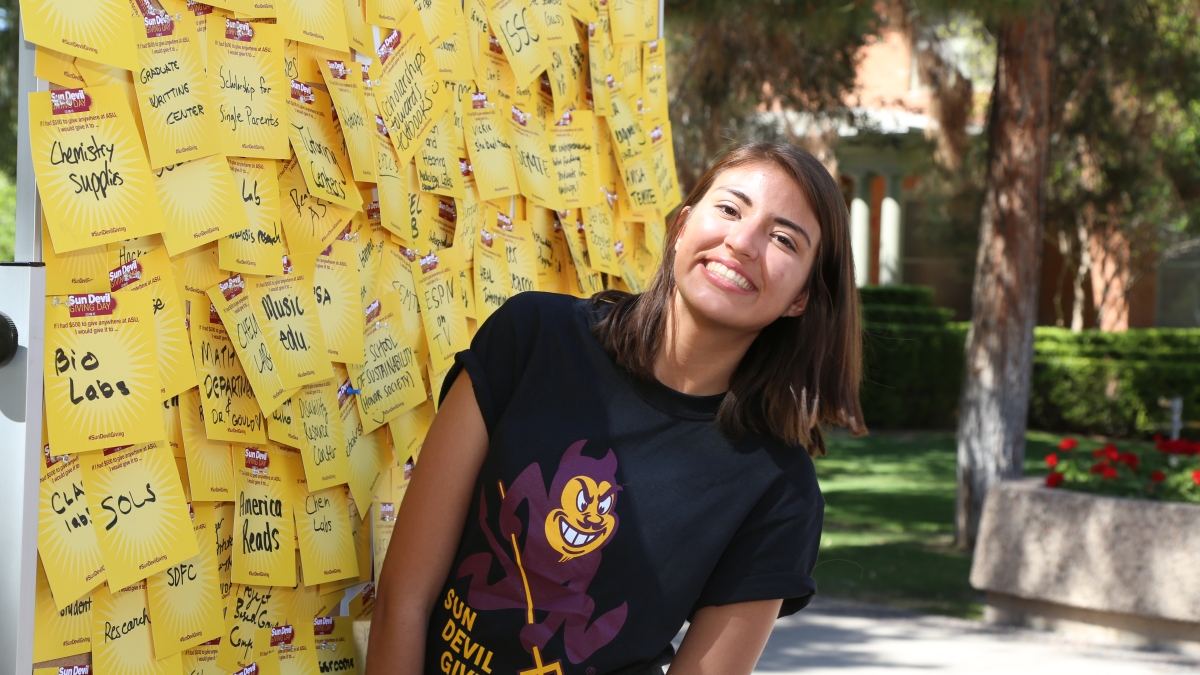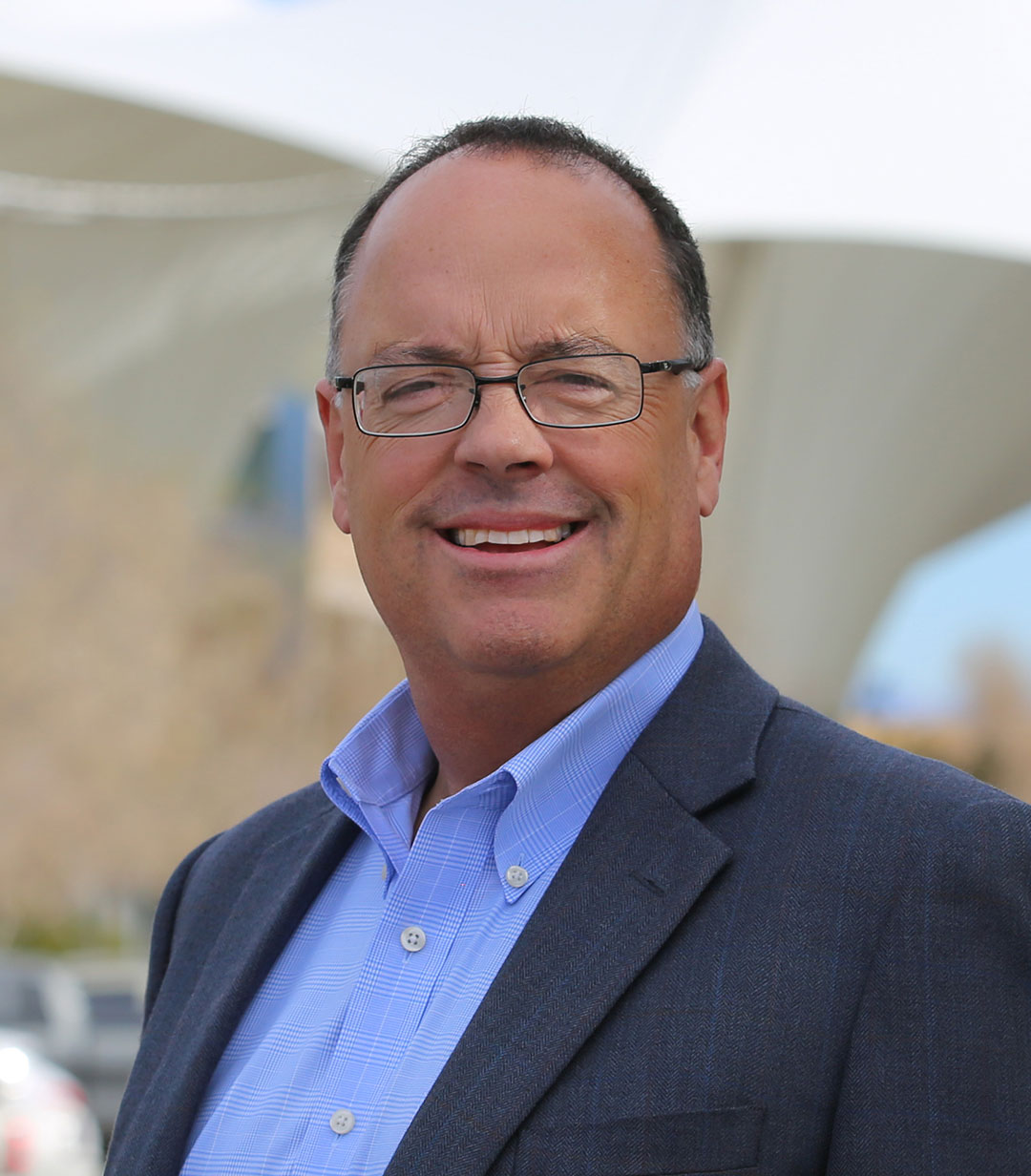In the past decade, Arizona State University has led the nation in creating unparalleled access to education and programs to ensure success for an increasingly diverse student population — while building and maintaining global research excellence and attracting some of academia’s greatest minds.
To continue its ambitious trajectory, and in part to meet the growing demand for college-educated workers in Arizona and beyond, ASU must accelerate its educational activities.
Moving forward, ASU is building on a model of a broad set of investors, including the core investments from the state of Arizona.
ASU is rising to be of greater service to a broader spectrum of our society and must look to new ways to sustain its academic and administrative units.
In that context — and drawing on ASU President Michael M. Crow’s challenge to explore innovation across campus — ASU’s not-for-profit affiliated fundraising, technology transfer, real estate, private partnerships and special research organizations are championing a new model for diversified revenue generation to support the New American University.
That model, Enterprise Partners, grew out of discussion between Crow; R.F. “Rick” Shangraw, chief executive officer of the ASU Foundation, the private, nonprofit group that raises and invests private contributions to ASU; and the ASU Foundation board. It was designed over the course of a year with input from experts in corporate and foundational governance, law, nonprofits and academia.
The model moves the university beyond traditional fundraising and towards comprehensive “resource raising.” It was implemented July 1.
“We’re not a business, we’re not an agency — we’re a public knowledge enterprise in the form of a university,” Crow said. “We need every conceivable mechanism and structural tool, organizational tool, engaging tool and partnership tool to allow us to advance.”
David Bass, director of foundation programs and research at the Association of Governing Boards of Universities and Colleges, said, “Arizona State University’s restructuring of their affiliated organizations as the Enterprise Partners represents an innovative effort to align and elevate the work of their fundraising, real estate and research affiliates in support of the strategic priorities of the university. While many institutions are exploring changes to the ways they work with their affiliated foundations to enhance alignment and effectiveness, the Enterprise Partners model will be one of the first models in which development, research and entrepreneurial organizations are integrated under a single board.”
R.F. “Rick” Shangraw
Here, Shangraw explains in detail what Enterprise Partners is and why it’s needed.
Question: Tell us how your expertise comes to play in your current role.
Answer: First and foremost, I’m part of a great team who made Enterprise Partners a reality. Any expertise I have is small compared to the collective experience of our team.
I started out in academia on the faculty at Syracuse University. I moved into the private sector and ran consulting firms looking at energy, environmental and information tech issues. Then, I came back into academia and was senior vice president for research and economic affairs at Arizona State University prior to joining the ASU Foundation.
In my current role, I’m able to meld and merge all these experiences together — leading large organizations; having an appreciation for the university and President Crow’s vision, what it does and how it supports our community; and also the ability to think through complex research challenges that the university is addressing.
Q: What is different about how ASU is growing?
A: ASU, in its charter, defines itself not by whom it excludes, but by whom it includes and how they succeed. President Crow talks about how educational attainment is the single greatest determining factor in the ability to move up and into the middle class, especially as we see that the jobs of tomorrow increasingly require a college degree. ASU’s growth is in showing that income and ZIP code have never determined talent or ability and in guiding those students along their own path to discovery, unbounded by traditional disciplines. President Crow has put in place very innovative models about how professors teach students, the way facilities are managed and the way the ASU team conducts its research.
Because of this, ASU has been able to be both efficient in the way it delivers education to students and also very effective in having students come out of its programs with great expertise and experiences as they move into the workplace, graduate school, volunteer organizations or other postgraduate plans.
Q: Tell us what Enterprise Partners is and how it aligns with what you just described.
A: It’s a revolutionary business model.
One of the things we’ve been thinking about here is how we emerge and align the needs of the university with that of the ASU Foundation. As we looked at this — and President Crow and I have been thinking about this for a long time, along with the board chair for the foundation, Bill Post — we came to believe there was an opportunity to create a new model for the foundation that provides a much broader base of support and also additional support to ASU.
We call this Enterprise Partners. It looks much like a holding or parent organization made up of separate 501(c)(3), not-for-profit organizations. It will include the ASU Foundation, ASURE [the ASU Research Enterprise], AzTE [Arizona Technology Enterprises], University Realty and the Research Collaboratory.
This model allows us to add new entities for diverse revenue as those opportunities come along.
The Enterprise Partners business model provides efficiency in the way we deliver services to those organizations — in terms of financial services, human resources, computer and IT services. It also provides a focal point for President Crow and ASU to look tap additional resources for the university.
Q: How is that different from the current model?
A: Enterprise Partners is different from our current model in a couple of important ways: First, we pulled out of the existing foundation those areas that have responsibility that’s different from the core responsibility of the foundation, which is to raise gifts and provide philanthropic resources back to Arizona State University.
As we make that change, we’re now able to have specialized boards and oversight of these other organizations where our board members have the skills and expertise to provide guidance and fiduciary responsibility to the very distinct functions that used to be amalgamated in the foundation.
Q: Have you seen something similar to Enterprise Partners, either in the private sector or other institutions of higher education?
A: Once again, ASU is taking a very innovative approach to this challenge, and the challenge is: How do you establish partnerships with not-for-profit and supporting organizations? Perhaps we’re one of the first universities across the country that has this model. As we go around the country and talk to universities, many are interested in what we’re doing, some have asked for more details, and my expectation is that this will be a model that will be adopted in the future by other universities.
Now, in the corporate world, this model is very common. In fact, as you look around the country, one of the best examples — and it just happened recently — is what happened with Google. As many of you may know, Google broke into a new organization with Alphabet being their holding organization much like our Enterprise Partners. Google was then allowed to focus on their core responsibilities and initiatives around search, and around mail, and around the things that Google was really built on —- much in the same way our foundation now can focus exclusively on philanthropy.
Q: What was the process you went through to establish Enterprise Partners?
A: If we go back in history a little bit and reflect on how we got to where we are today, I think there are couple of things that were really important.
The first piece was an interest on the part of the board of directors to the foundation to clarify the roles and responsibilities around all these distinct initiatives that were embedded in the foundation.
Second, there are a number of members on our board who do have experience in the corporate world where there is a very similar organizational structure and so they brought to the table their experiences with those models.
And finally, there was clear interest on the part of the university, specifically President Crow, in finding a more flexible and innovative framework for how he can work with the foundation.
Enterprise Partners provides that.
Q: In 2011, you wrote a series of prescriptions for how to improve universities’ technology transfer organizations. If you could write a prescription now for how to change universities’ funding models, what would it be?
A: In the next decade, higher education will face a number of incredible challenges. I suspect over the course of the next 10 years that there will be a lot of changes: There will be new forms of organizations to provide higher education to students, there will be new ways of thinking about the delivery of education, there will certainly be a movement towards more online education. That disruption in the marketplace will cause us to rethink everything we do in education, and this includes the way we think about our foundations and how they support our universities.
If there were any prescription we could put on the table today for foundations and particularly for the ways they support their institutions, it’s to become more innovative, more flexible and to find ways that they can provide a variety of different revenue streams back into the university.
Q: You’ve been at ASU for more than a decade. Any particular reason why?
A: I’ve been at ASU, or involved with ASU, for the past 11 years. I came from the East Coast, and like many people in Arizona, I’m not a native. As I came out and played a number of roles at ASU and now the ASU Foundation, I truly fell in love with Arizona and the opportunity we all have here to advance higher education — to transform it. What’s happening at ASU is revolutionary in higher education.
Top photo: Sun Devil Giving Day 2016, an annual event where thousands of Sun Devils — including alumni, parents, faculty, staff, students and fans — come together to support the university’s education initiatives and research ventures with a goal of solving some of the most pressing concerns facing society today. Pictured is the Giving Day card board, where students can post areas of the university they want to receive support.
More Arts, humanities and education

Local traffic boxes get a colorful makeover
A team of Arizona State University students recently helped transform bland, beige traffic boxes in Chandler into colorful works of public art. “It’s amazing,” said ASU student Sarai…

2 ASU professors, alumnus named 2025 Guggenheim Fellows
Two Arizona State University professors and a university alumnus have been named 2025 Guggenheim Fellows.Regents Professor Sir Jonathan Bate, English Professor of Practice Larissa Fasthorse and…

No argument: ASU-led project improves high school students' writing skills
Students in the freshman English class at Phoenix Trevor G. Browne High School often pop the question to teacher Rocio Rivas.No, not that one.This one:“How is this going to help me?”When Rivas…



